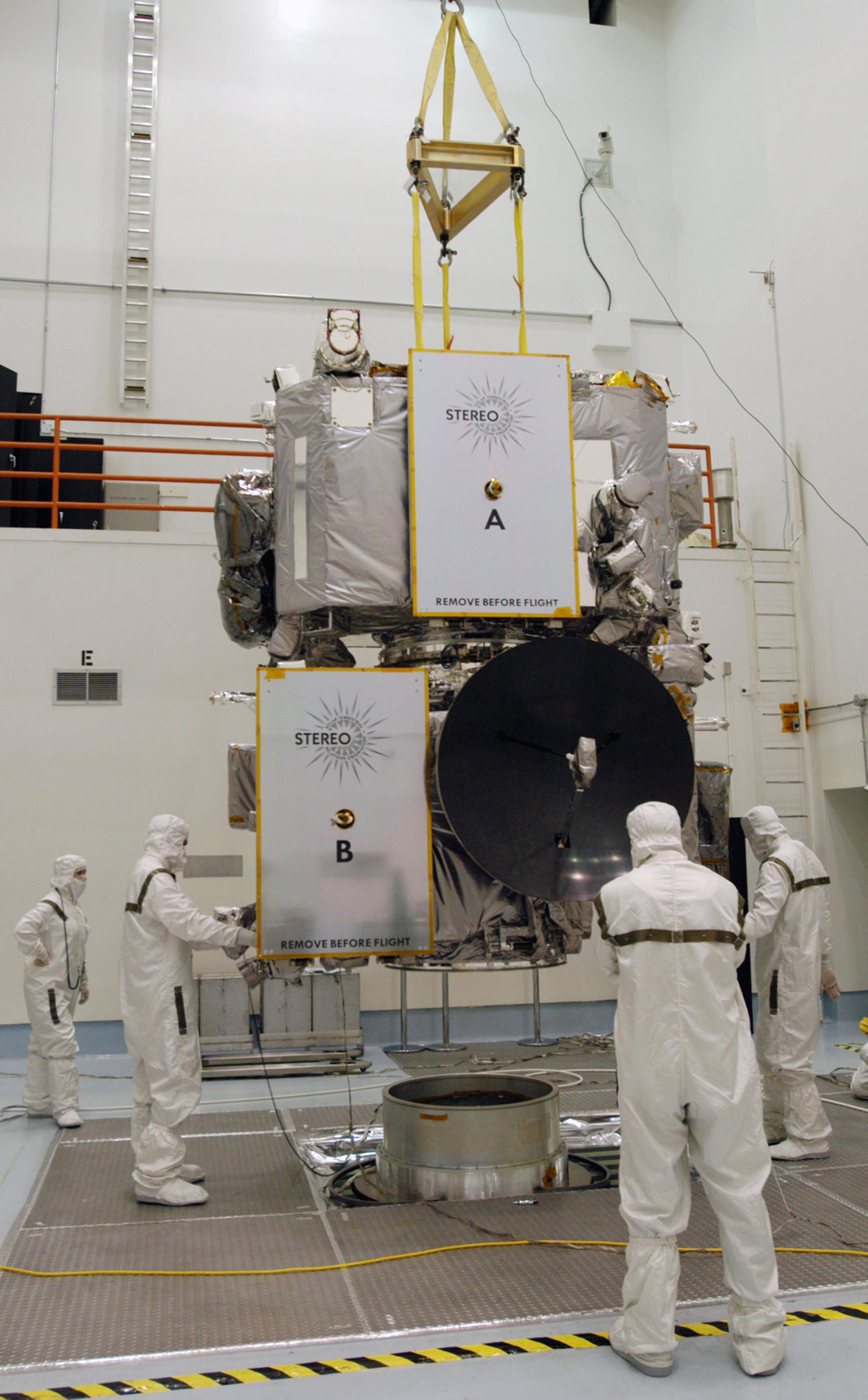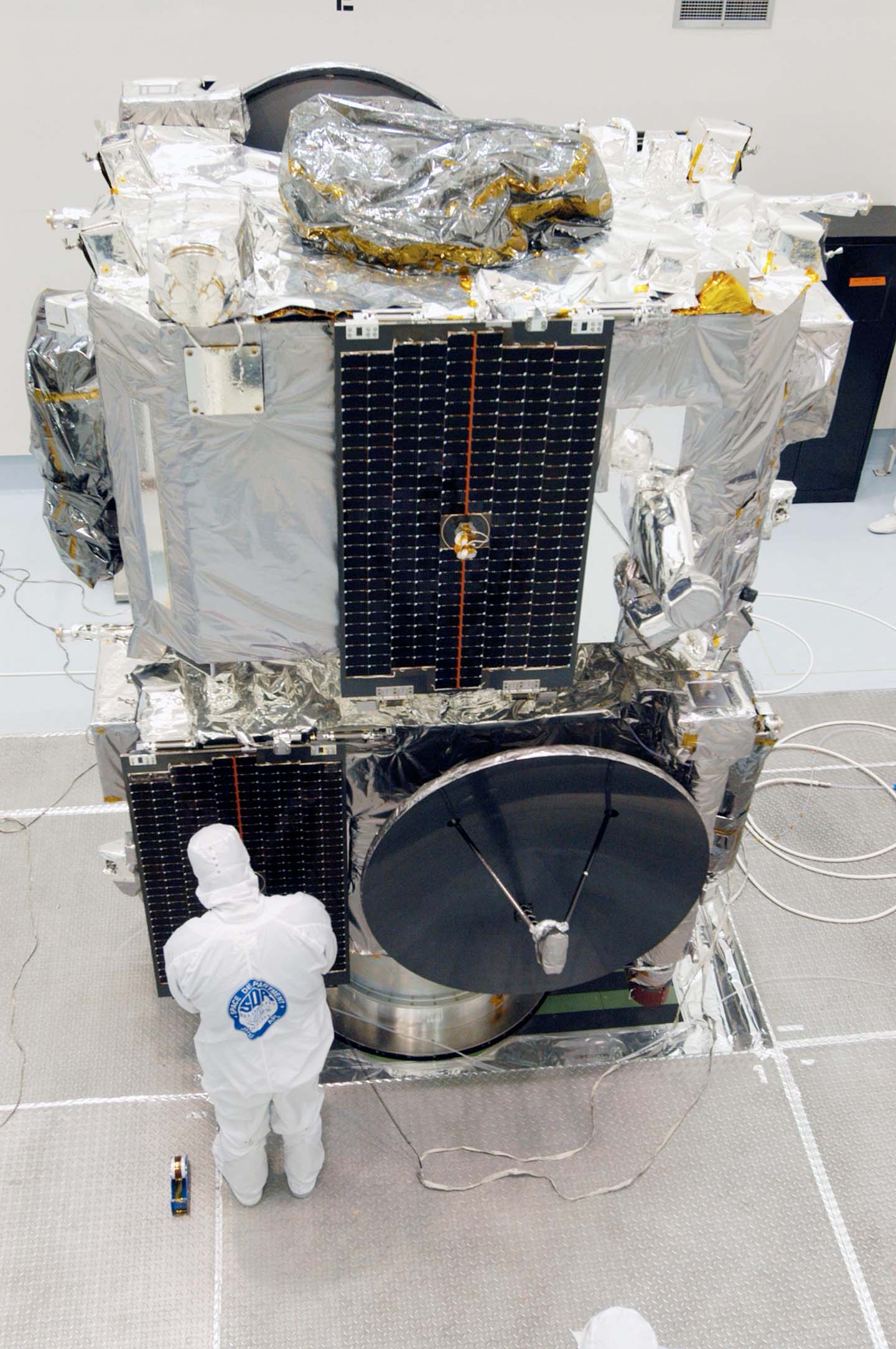Press Release
Two APL-Built Spacecraft Set for Aug. 31 Launch
STEREO Mission Will Soon Provide First 3-D Views of the Sun
Fri, 08/18/2006 - 09:33
Two nearly identical spacecraft, destined to capture the first-ever 3-D views of the sun, are scheduled for launch on Aug. 31 aboard a Delta II rocket from Cape Canaveral Air Force Station, Fla., at 3:12 p.m. or 4:20 p.m. EDT. The window extends through Sept. 4 with two launch opportunities daily.
Built and operated for NASA by The Johns Hopkins University Applied Physics Laboratory (APL), in Laurel, Md., the two-year STEREO (Solar TErrestrial RElations Observatory) mission will explore the origin, evolution and interplanetary consequences of coronal mass ejections. These powerful solar eruptions are a major source of the magnetic disruptions on Earth and a key component of space weather, which can greatly affect satellite operations, communications, power systems, and the lives of astronauts in space.
"Building and testing two spacecraft simultaneously has been a technical and scheduling challenge, but an effort at which we've been successful," says Ed Reynolds, APL STEREO project manager. "The entire STEREO team is so proud and excited to launch the twin observatories and be part of the first mission to capture coronal mass ejections in 3-D."
To capture the sun in 3-D, the twin observatories will fly as mirror images of each other. One of the observatories will be placed ahead of Earth in its orbit around the sun and the other behind. Just as the slight offset between your eyes provides you with depth perception, this placement will allow the STEREO observatories to obtain 3-D images and particle measurements of the sun.


